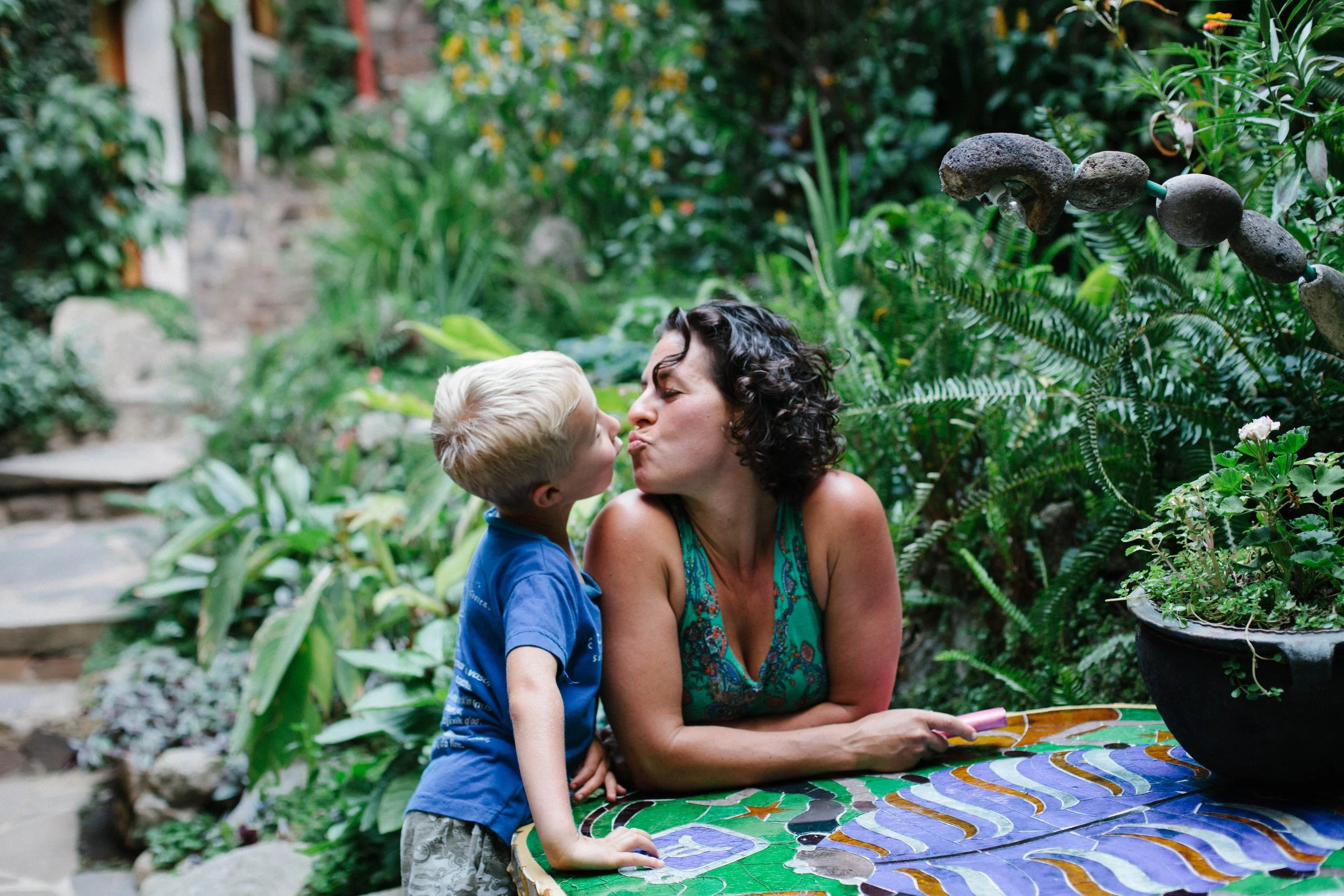Curiosity, Change and The Rule of Three
This weekend I went to the beach solo with the kids. Usually we go with friends or at least as two parents. I always expect a bit of complaining: it is hot, there is inevitably some chafing on the inner thighs or balls, there are bug bites, walking on hot sand… there are physical discomforts that are wrapped up in the experience. It isn’t pure bliss. And that is a normal part of life.
But before we left I had a serious talk with the kids… about just having fun. And I had a serious talk with myself about expectations: let go of them. Forget your morning yoga and hours alone pondering our insignificance. (I love that beach meditation… it feels so obvious when I stare at the huge ocean with its own rhythm).
We have had an amazing time and I have noticed something else really interesting, my 14 year old has lately been more teenager and less boy. But these days at the beach I have seen the curiosity of a boy re-emerge. He has been into digging, exploring, building, running, swimming and just being opened with his surroundings.
And as I felt my teenager allow himself into the curious state of being, I was reading (from “Polyvagal Theory in Therapy” by Deb Dana) about curiosity. It was a perfect connect. I suddenly understood my boy was safe from the pressures of being a teenager to just be curious.
Curiosity is available when there’s a belief that new information is available and that exploring the new information is manageable (not risky). For some, so much is dangerous (like a teenage boy ruled by hormones and trying to be cool). They don’t have flexibility in their responses so they can’t be curious. It is all about: my hair, my abs, my pimples, what will my peers think, and “am I cool?” There is no space to feel curious.
When we are rigid, we can’t approach life with curiosity. As we create safe spaces, we can become curious kids again…
A way to actively shape our ability to be curious is finding and feeling small shifts with our observations, then we can begin to re-pattern our beliefs and behaviors. Something perceived as too different activates fear. The way to shift thinking and shape behavior is with changes that aren’t too extreme or too similar. If something is too similar, then it feels safe and there’s no need to make a change. So working on incremental change means emphasizing small differences.
Without observing, we miss moments of subtle change, and instead we focus on the familiar habitual responses. For people who are commonly stuck in rigid patterns, they need a way to look for micro-moments of change.
The “rule of three” means that the third repeated event is a pivotal point in perceiving an emerging pattern (Carlson & Shu, 2007). We are often stuck in habitual response patterns, so perceiving a new pattern is both challenging and essential. And “the rule of three” suggests that by the third change or observation of change, something sticks. The pattern starts to cement.
Using the rule of three to guide change is a great tool: take time at the end of the day to review your automatic responses:
Were there times when you reacted differently (to a typical situation, stress or unhealthy pattern you want to change)?
Did you respond in a slightly different way?
Did your autonomic state feel less intense?
Could you feel space for flexibility?
How did you do it?
What did you think, feel or notice?
Did your story change a bit?
It is helpful to bring awareness to: body sensations/five-sense perception, images, feelings and thoughts.
These are the important micro-moments that are interrupting old, familiar response patterns and show you that change is happening.
Are you interested in working on your personal development? Are you looking for a life coach or a life consultant? Are you feeling stagnant? Do you want to jumpstart change?
My transformational approach is a process where awareness, alignment, and action work together as catalysts to create momentum for change.
*Awareness is knowing what you genuinely want and need.
*Alignment is the symmetry between our values and our actions. It means our inner and outer worlds match.
*Action is when you are conscious that what you say, do and think are in harmony with your values.
Together we build an understanding of what you want to accomplish, and delve deeply into building awareness around any thoughts and assumptions that you may already have. To truly transform your life, I will empower you to rethink what’s possible for you.
__
Learn more about my approach to life consulting and relationship coaching here or get in touch for your free 30-minute consultation here! Don’t forget to follow along @LilyManne on social for more regular updates!


